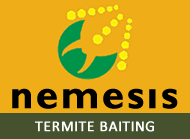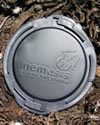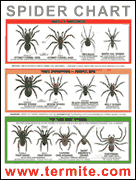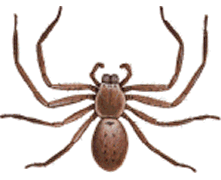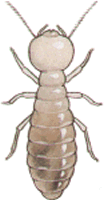| Termite Baits for Termite Control |
| Termite Baits - Termite Control - Termite Protection |
| Termite baiting is aimed at eliminating a termite colony in a safe non-invasive way. Registered termite baits available in Australia are Nemesis Termite Bait, Exterra and Sentricon Termite Baits.
Termite baits in Australia - APVMA Registered - pesticides and termite baits must be registered pursuant to legislation administered by the Australian Pesticides and Veterinary Medicines Authority - APVMA - a Federal Government instrumentality.
The termite bait stops the termites from moulting there external skeleton - an essential part of their development and life-cycle. A cascading lethal effect: The chemical prevents the termites from regrowing their external skeleton, resulting in the death of the termite. Termites cannibalize other dead termites thereby hastening the elimination of the entire colony. When is it used: Where live activity is found we recommend that an above-ground termite bait station containing termite bait is positioned directly nest to live termites. Regular monitoring: The above-ground termite bait stations are checked at 2 to 3 week intervals to assess levels of termite bait consumption by the termites. The termite bait is replenished as required. With sufficient consumption the entire termite colony can be eliminated. BUT remember that other termite nests may still infest the building. BEWARE: Some unscrupulous pest control companies offer to install in-ground plastic stations as a termite "baiting" and monitoring program even if no live termites are found on the property and a complete soil treatment to AS3660 is a viable (and much better) long term option. REMEMBER: this strategy assumes the blind termites will "find" the monitoring stations, then and only then, is the termite bait added. Many home-owners complain to us about such unscrupulous pest controllers. The home-owners were lead to believe the termite "baiting" and monitoring plastic stations included the termite bait upon installation. It doesn't. In fact, the termite bait is only added if the termites happen to find and infest the timber inside the in-ground stations. The termites may infest the building, long before blindly finding the in-ground stations around the perimeter of the building. In-ground monitoring stations may be an option where a complete soil treatment to AS3660 is impracticable, such as, with a home built on sandstone (no soil thereunder) or a terrace attached in a row of joined terraces or a ferry wharf, where a complete soil treatment to AS.3660 cannot be carried out. Each case must be assessed on it's merits. |
|||
| Above-ground baiting of live termite activity found: An excellent initial strategy whereby the termite bait is immediately placed in an above-ground station and onto the timbers where termites are found feeding. The termite bait is highly attractive to destructive termite species. This means termites readily feed on the termite bait, taking it back to the central as part of their mutual feeding and grooming process.
Termites cannot avoid what they cannot detect: Registered termite baits are designed so that the IGR chemical cannot be detected by the termites. They do not know were the deadly effect is coming from. The insect growth regulator active ingredient stops the termite colony being able to reproduce as the Queen termite becomes affected and dies. The termite bait is replenished or refreshed periodically.
In-ground monitoring of termite activity: If live termites cannot be located, special in-ground monitoring stations can be placed either in the soil, through concrete or under pavement at strategically important points around a building. These stations can be inspected on a regular basis at intervals of approximately 2 to 3 months. Regular inspections are essential: It is strongly recommended that regular 3 monthly or 6 monthly house inspections are also carried out by your pest controller if your house/property is assessed to be at moderate to high risk of a termite infestation. Termite Monitoring: When the termite colony has been eliminated, the termite bait is removed and new timber inserts are put into place. The monitoring system then continues to provide an opportunity to detect termites foraging in the soil close to structures. Several months to gain control ? termite baiting may take several months to completely eliminate a termite colony even in favourable circumstances. However, in ideal circumstances termite baiting can be reasonably expected to greatly reduce the rate of timber consumption by the termite colony within one month after the termites begin to consume the termite bait. With sufficient termite bait being consumed it is virtually certain the colony will be eliminated in the medium term, but not always. Additional system features: The termite bait system features stations that are opened by a special tool. The active ingredient of the termite bait is securely contained below ground. The active ingredient has extremely low toxicity to humans and pets. The termite plastic station is especially designed low profile permanent fixture for insertion in concrete pathing around the perimeter of a house. |
|||||
| Does the termite bait actually work? Yes. Termite baiting can be highly effective BUT only where a sufficient number of termites "find" and consume the termite bait. The system is preferred by some home-owners as the termite bait is of very low hazard to humans and other mammals and is an environmemtally friendly product.
Do I need to use licensed pest controller? Yes. The product is registered for use ONLY by State Govt licensed pest controllers. That person should have many years field-work experience in termite control and be professionally trained in related subjects, such as termite biology, ecology, building construction and associated likely termite entry points, termite detection and reporting, along with integrated termite management procedures. With so much at stake, the home-owner should NOT risk do-it-yourself amateur treatments or baiting for termites. Are all licensed pest controllers properly trained? NO. It is far too easy to obtain a State Govt Pest Controllers Licence - BE CAREFUL - click here for more details. What sort of harm can termites cause? This can vary greatly depending on the species of termites, the size of the colony, it's age and vigor as well as other factors, such as the availability of food sources. There are many other factors that can play a role in the speed of attack and the extent of damage. In many cases where attack is detected early, the cost of repairs is most often minimal. But the longer the infestation lasts, the greater the damage and cost of rectifying the problem, particularly if they get into the structural roofing timbers. Termites can also damage books, clothing and a wide range of other cellulose based items. How often should my property be inspected? Australian Standard AS3660 advises that properties should be inspected at intervals of every 3 to 6 months in designated high risk situations and otherwise annually. What is the average risk factor of termite attack and damage? based upon industry and CSIRO studies, it appears about 1 in 3 houses will be attacked and/or damaged by termites during the economic life of the structure. Thus the risk usually increases with the age and location of the property. However, there have been cases of new homes being severely damaged within 3 months of construction. What do I do if I find termites? Do NOT disturb them or attempt to treat them yourself with sprays or aerosols. Call in a professional pest controller. Disturbing the termites will most likely cause the foraging termites to avoid the immediate area and move to another area of the building where they may severely damage timbers before detection. Are all termite species harmful to houses? No, there are more than 300 Australian termite species. A large number of these feed on grasses, standing trees or decayed timbers. In nature their role is to recycle important nutrients. Only about a dozen species common in urban areas will cause severe damage to timber structures. It is important that you engage a professional pest controller to inspect and assess the risk of termite infestation, integrated control methods and likelihood of success. If I have disturbed active termites in my property what should I do? Try not to disturb them further. Try to collect 10 to 20 specimens, preferably termites with darker heads (these are soldier termites). Place these termites in a mixture of 70% methylated spirits and 30% water to preserve them for identification. How long does it take for termite bait to kill the termite colony? This depends on many environmental variables, such as (1) the species of termite - some are very timid and will avoid a baiting location even if only mildly disturbed (2) the amount of termites that ingest the termite bait - if the baiting location has very few termites then effective baiting may not occur (3) the time of year - in a cold winter the termites may largerly hibernate. In ideal circumstances - the right species - warm weather - heavy feeding locations - it will likely take about 6 to 12 weeks. Verification of termite colony elimination? In vast majority of cases of termites in a building, it is virtually impossible to 100% verify a total colony elimination if the nest is hidden underground and totally out of sight. However, substantial bait depletion (feeding) and affected sickly termites being observed and recorded by the pest controller can provide high level confidence that there has been a decline in colony numbers of worker termites (they do the damage) to reduce severe on-going damage to the building. Will placing In-Ground Stations around my house perimeter be more likely to attract termites to my house? NO. The in-ground stations contain timber slats. The termite bait is added after the termites supposedly "find" the stations and infest the timber therein. Termites cannot smell the timber hidden in the soil. Termites randomly forage through the soil looking for new food sources. The in-ground stations may or may NOT allow existing termite activity to be detected and thereafter a baiting process can commence. Bear in mind, there may be other unaffected subterranean termite colony nests within range of your building. |
||
| Authoritative References • PDF Articles • Termite Baits |
